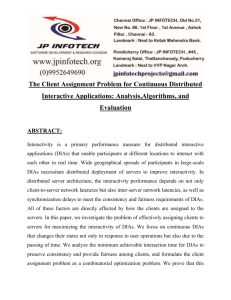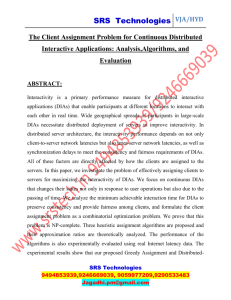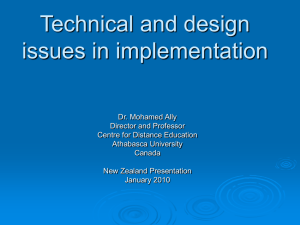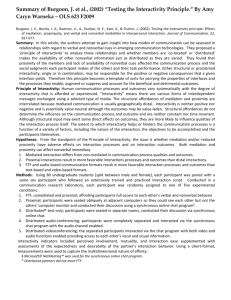Abstract - IEEE 2015 Final Year Projects
advertisement
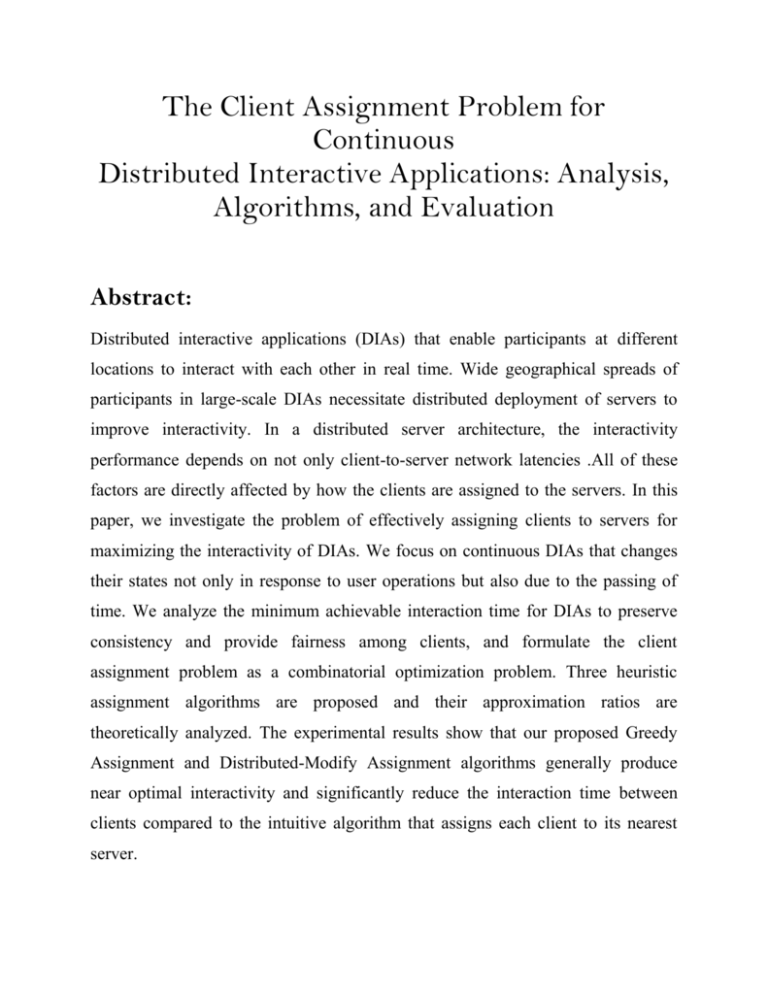
The Client Assignment Problem for Continuous Distributed Interactive Applications: Analysis, Algorithms, and Evaluation Abstract: Distributed interactive applications (DIAs) that enable participants at different locations to interact with each other in real time. Wide geographical spreads of participants in large-scale DIAs necessitate distributed deployment of servers to improve interactivity. In a distributed server architecture, the interactivity performance depends on not only client-to-server network latencies .All of these factors are directly affected by how the clients are assigned to the servers. In this paper, we investigate the problem of effectively assigning clients to servers for maximizing the interactivity of DIAs. We focus on continuous DIAs that changes their states not only in response to user operations but also due to the passing of time. We analyze the minimum achievable interaction time for DIAs to preserve consistency and provide fairness among clients, and formulate the client assignment problem as a combinatorial optimization problem. Three heuristic assignment algorithms are proposed and their approximation ratios are theoretically analyzed. The experimental results show that our proposed Greedy Assignment and Distributed-Modify Assignment algorithms generally produce near optimal interactivity and significantly reduce the interaction time between clients compared to the intuitive algorithm that assigns each client to its nearest server. Existing System: Symmetric key generation system. A central server is maintained. So more chance to loss the data. If an attacker compromises the central node, all the keys it has can be retrieved, and the security of the network is exposed. The RC4 mechanism dynamically changes as a function of the residual virtual energy of the sensor. It’s used to transfer the data into the network. Disadvantages: Packet loss Retransmission Reducing life time. Proposed System: In this paper, we have investigated the client assignment problem for interactivity enhancement in continuous DIAs. Nearest-Server Assignment algorithm that assigns each client to its nearest server. In this paper, we focus on reducing network latency for improving interactivity in DIAs. Three heuristic assignment algorithms are proposed and their approximation ratios are theoretically analyzed. For the heuristic algorithms, we can simply use the lengths of the directed routing paths between clients and servers in the calculation. Advantages: produce near optimal interactivity reduce the interaction time between clients compared to the that assigns each client to its nearest server. we focus on reducing network latency for improving interactivity in DIAs. Hardware Requirements: SYSTEM : Pentium IV 2.4 GHz HARD DISK : 40 GB RAM : 256 MB Software Requirements: Operating System: Windows XP IDE : Microsoft Visual Studio 2010 Coding Language : C#.NET.
